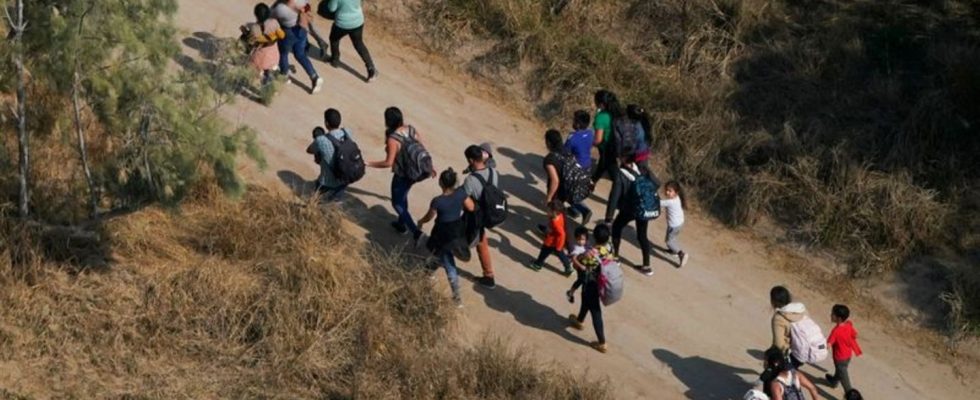Land route
UN: Thousands die on dangerous migration routes
Migrants walk along a dirt road in south Texas after crossing the U.S.-Mexico border. photo
© Julio Cortez/AP/dpa
Through the desert, across the sea, through the forest: There are many migration routes worldwide – one land route is highlighted in a study as particularly dangerous. But refugees also take great risks elsewhere.
The Mexican-American border was the most dangerous last year, according to a UN analysis Migration route worldwide over land. The International Organization for Migration (IOM) in Geneva reported that 686 migrants died or were missing there. However, there were probably many more deaths that were not registered anywhere. The number was around eight percent lower than the year before.
In total, at least 1,457 migrants died on the American continents last year, the IOM said. The organization has been registering deaths and missing persons on all migration routes worldwide since 2014. Since then, the IOM has registered a total of 58,447 deaths and missing persons. By far the highest number is in the Mediterranean: 28,074 people since 2014.
Last year, 2,411 deaths and missing persons were documented on the Mediterranean routes. This year there were already 2,325 on the routes from North Africa and Turkey towards Greece, Malta, Italy, Cyprus and Spain by the beginning of September.
Increased risks also for refugees from North Korea
According to a UN human rights expert, after the partial reopening of the country’s border by North Korea, the risk for refugee North Koreans of being forcibly returned to their homeland is increasing.
The UN Special Rapporteur on human rights in North Korea, Elizabeth Salmón, welcomed the steps to open the border in the South Korean capital Seoul. However, she was “extremely concerned about the acute risk of forced returns of North Koreans held in other countries,” Salmón said in a statement.
According to Salmón, returning is risky for those affected as they risk torture and other ill-treatment. The Peruvian lawyer emphasized that she had repeatedly drawn attention to the problem in China and other UN member states. Countries would have to adhere to the international law principle of non-refoulement. According to this principle, the return of people to states where they are at risk of torture or other serious human rights violations is prohibited.

